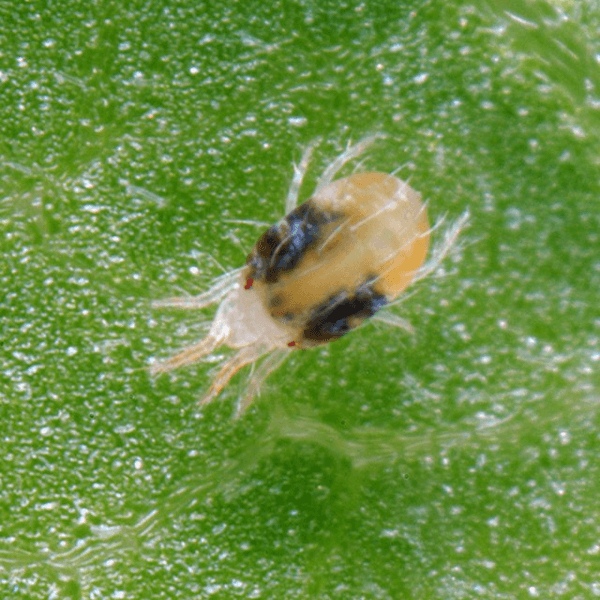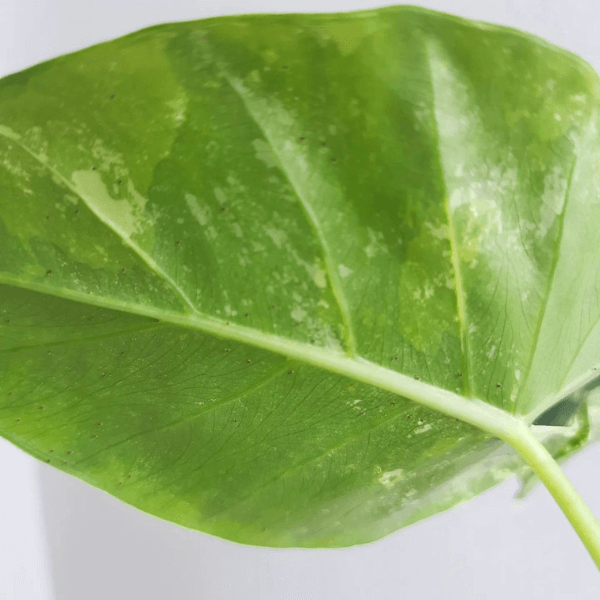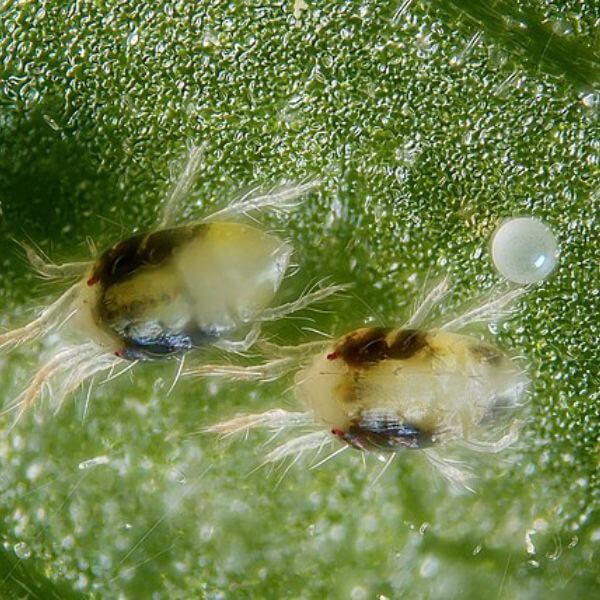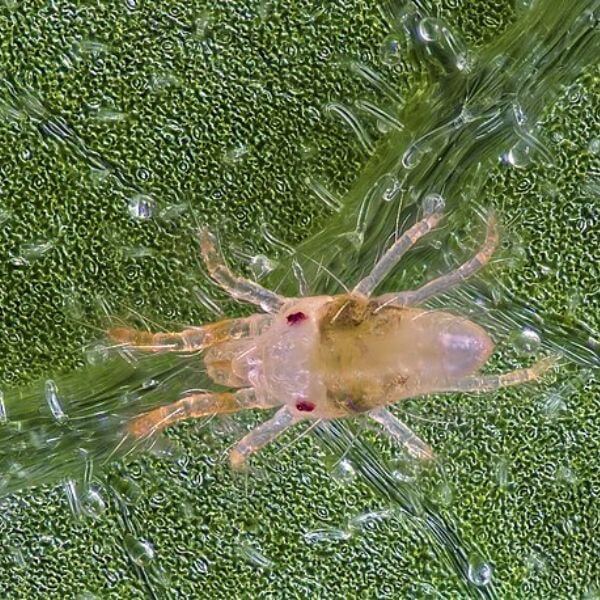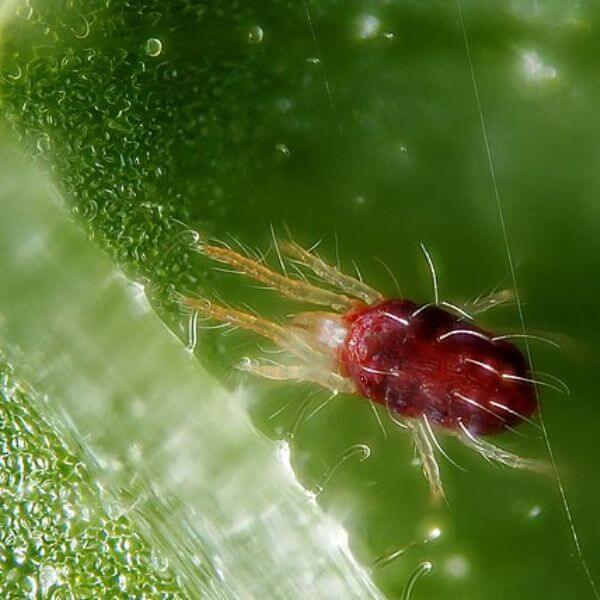Spider mites are one of the most troublesome pests on houseplants. They are tiny, hard to spot, and seriously sneaky little creatures. As a result, repelling them is pretty challenging but not impossible. Consistency and good tips can help you eliminate them effectively.
Twospotted spider mite (tetranychus urticae) and carmine spider mite (tetranychus cinnabarinus) are the most common spider mites that damage indoor plants. There are slight morphological and biological differences between the two species. Using pesticides can also result in hybrid populations, especially in greenhouses, because they will become resistant to pesticides.
It is common for spider mites to be abundant by the time you discover them. There is a tiny chance of finding a few mites on your plants. They are usually only noticed after the plant has already suffered extensive damage.
In this article, you will learn how to recognise spider mite damage on your plants and how to prevent and treat it.
How do spider mites look? 🧐
Make sure you have a magnifying glass handy because spider mites are very tiny. They are about 1/60 inch to 1/25 inch long when they are adults. Juvenile mites are even smaller than adult ones.
Female mites are about 1/60 inches long, while males are slightly smaller. After hatching from the egg, larvae have three pairs of legs. An adult spider mite has four pairs of short legs, while its nymphs have only three pairs.
They have recognisable black spots on both sides of their body. Depending on their species and life stage, their bodies are different colours. The body is usually yellow or green with a dark green pattern during the growing season. Spider mites overwintering or preparing to spread to new host plants are red.
At the beginning of the infestation, spider mites often appear as colonies on the underside of leaves. It is common to find white debris and web-like stuff around colonies. They hide behind their webbing.
Spider mites biology 🤓
The female spider mite lives for about 50 days. During its lifetime, it lays 100-130 eggs under leaves, where a webbing protects them. It takes only 8-10 days for the spider mite to develop from egg to adult.
Due to their fast life cycle and high reproductive rate, spider mites’ populations can double in 2-4 days under favourable conditions. When the days shorten in autumn, and the temperature drops, orange-red females emerge and survive the winter dormant.
Dormant spider mites tolerate pesticides and low temperatures well. In the spring, the females wake up from their resting state. If the temperature is constantly at least 25°C, the mites will not go into dormancy.
If spider mites are not repelled from the greenhouse in the fall, they will cause problems for the plants next summer 10-14 days after the greenhouse is heated and the temperature rises to 18-20 degrees.
What does spider mite damage look like? 🤕
Spider mites damage plants by sucking sap from plant cells. They use their whiplike mouthparts to bruise the bottom side of the leaf. The traces of sucking are visible on the upper surface of the leaf as yellowish spots (empty plant cells).
The first signs of damage appear as clear light spots or light yellow spots on the leaves. I recommend examining the underside of the leaves carefully using either a magnifying glass or a magnifying glass because they are incredibly tiny.
Small, light flecks usually appear over damaged areas, making the plant look speckled. As the damage worsens, the spots enlarge into pale, chlorotic spots that cover the entire leaf. Early signs of spider mite damage include yellowing leaves that drop prematurely. Severely affected leaves and sometimes the shoots’ tops are covered with a delicate white webbing.
Under the leaves, you can find spider mite colonies and their tiny eggs. It is also possible to see piles of shelled eggshells and the mites’ shed shells if they have been present for some time. As mite populations increase, leaves, buds, and flowers are more severely damaged.
How will they get to my plants? 😤
Whenever we find insects on our plants, we wonder how they got here. Pests can come from anywhere and land on our plants.
There are several ways they can enter your home:
How to prevent spider mite infestation? 🌿
Prevention is the best medicine. It is crucial to detect pests early to prevent plant damage. Regular monitoring is enough if you haven’t had a problem with them. As soon as you discover something suspicious, you can react quickly.
Taking preventive measures is a good idea if you have been experiencing frequent problems with them.
How to get rid of spider mites 🥊
To protect other houseplants, isolate the infected plant first. It is very easy for spider mites to move from one plant to another. Afterwards, inspect all plants close to infested plants that do not have spider mites. For a while, make sure to check it at least once a week.
In the next step, manually remove some of the most infected leaves since these leaves won’t regenerate anyway. As a result, we can concentrate only on saving those leaves.
Spider mites make their main burrows under the leaves, so it’s essential to spray the undersides of the leaves properly. To do this, tilt the plant slightly to the side so that the lower leaf parts are visible.
Be generous with your spray. Spray a large amount of solution on your leaves. Put something under the plant to catch the sprayed liquid that will drip from the leaves. The solution will reach the lower parts of the leaf more effectively if you rub the lower parts of the leaf with your fingers after spraying.
✨ 10 best ways to get rid of spider mites ✨
1. Spray with water or give it a regular shower
The spider mite does not like moist environments. Mites cannot continue to develop on a plant that is constantly submerged in water. However, this method only works if the mite population is not very large yet. Once the population has become very large, watering will not be helpful.
Additionally, not all plants prefer to be wet all the time. Find out if your plant can tolerate continuous showering before you do so.
2. Insecticidal soap spray
Most well-stocked local garden centres or hardware stores sell ready-to-use insecticidal soap for plants. The product is derived from plant-derived fatty acids. Soaps are only effective when they come into direct contact with the spider mites, and repeat treatments are required until all generations of spider mites have been eliminated.
Spray spider mites with insecticidal soap every day until they are all gone. You have to apply it pretty heavily to the undersides of the leave. Spray under the webbing as well. Spider mites produce webbing to protect themselves. This method requires patience and consistency.
At the same time, try to make their living conditions unsuitable by increasing the humidity so they won’t come back.
Pros:
- Not expensive
- You can find it in the local store
- Its ready-to-use liquid in a spray bottle
Cons:
- Time-consuming to use correctly
- Frequent applications
- You may have to rotate products
3. Neem oil spray
This natural product is derived from the fruits and seeds of the neem tree. Neem oil eliminates insects by contact and disrupts their egg production. So, after neem oil treatment, spider mites can’t reproduce so quickly anymore. You can buy it at most well-equipped garden centres or hardware stores.
To make the spider mite repellent solution, you will need 4 cups of water, 12 teaspoons of liquid soap, and 1 teaspoon of neem oil. It is necessary to use liquid soap because water and oil do not mix without an emulsifier. Dishwashing soap emulsifies the oil, allowing it to mix evenly with the water. The water and soap should be mixed first, then add the neem oil.
You can spray the solution on the plant easily with a spray bottle. An alternative is to rub the solution on the plant using a paper napkin or towel.
Pros:
- Not expensive
- You can find it in the local store
- Natural product
Cons:
- You must prepare the solution
- Time-consuming to use correctly
- Frequent applications
- You may have to rotate products
4. Rosemary oil spray
Rosmarinus is a powerful aromatic herb, without a doubt. It also has strong insecticidal properties and is frequently used in commercial insecticides. A study showed that rosemary oil is very effective at repelling spider mites.
If a plant is damaged, you can spray the damaged parts with oil mixed with water, or you can drop the oil into the pot as a preventative measure. I recommend giving your plant a shower or washing spider mites with water before treating it.
To make a repellent solution, you need 3 teaspoons of rosemary oil, 1 litre of water and 1 teaspoon of liquid soap. Without an emulsifier, water and oil cannot mix. Liquid soap solves this problem. Oil is emulsified by dishwashing soap, which ensures it blends evenly with water. First, mix water and soap, then add rosemary oil.
Pros:
- Not expensive
- You can find it in the local store
- Natural product
Cons:
- You must prepare the solution
- Time-consuming to use correctly
- Frequent applications
- You may have to rotate products
5. Liquid dish soap spray
Many indoor gardeners recommend using dish soap mixed with water. You can buy it from all well-stocked stores.
For solution, mix 3 tablespoons of dish soap with a gallon of water. When you put the mixture in a spray bottle, it is much easier to apply. Be sure to spray the plant stems and leaves under the leaves. Let that sit for a while, then wipe the leaves clean after.
Pros:
- Cheap
- You can find it in the local store
Cons:
- You must prepare the solution
- Time-consuming to use correctly
- Frequent applications
- You may have to rotate products
6. Rubbing alcohol spray
Rubbing alcohol repels spider mites very quickly. Gently wipe some rubbing alcohol onto a tissue or cotton ball, hold the leaf taut, and gently swipe the alcohol-soaked item over it. Alternatively, you can put rubbing alcohol mix into a spray bottle and spray all the leaves, especially to the undersides.
The alcohol will kill all adult mites by dehydrating them on contact. No damage is done to the eggs by it. Therefore I recommend spraying every three days for about 2-3 weeks. All eggs will have grown into adults by this time, so that we can get rid of them all.
You can prevent spider mites by spraying your plants with alcohol and water mix periodically. Make sure the alcohol is diluted with water before using it to avoid leaf burn. Make sure you test before using! A plant’s leaves and stems can be damaged by alcohol if it is sensitive.
For solution, dilute 1 cup of 70% rubbing alcohol in 30 oz water. Then mix it up and put it into a spray bottle.
Pros:
- Cheap
- You can find it in the local store
Cons:
- You must prepare the solution
- Time-consuming to use correctly
- Frequent applications
- I do not recommend using alcohol very often; plants can also become dehydrated by it.
7. Diatomaceous Earth
Diatomaceous earth is naturally occurring silicon-based rock pulverised into a fine white powder. It will work as a miticide in two ways. First, it is an abrasive material that pierces and physically damages the mites. Secondly, it works as a powerful desiccant.
Just remember that it works only when it’s dry. So, do not use it in conjunction with any spray methods.
When applying it, wear a mask to protect yourself from that dust. Simply dust the leaves of the affected plants as well as topsoil. This stuff either won’t kill the eggs. It will work as a systemic, so you might only need two applications.
Pros:
- Easy to apply
- You can find it in the local store
- Only 2 applications needed
Cons:
8. Predatory mites
It is possible to purchase beneficial insects from a local grocer, garden store, or agricultural store. You can also order them online.
A common predatory mite is Phytoseiulus persimilis. They are little red mites that attack the eggs and adults of spider mites. P. persimilis advantage is that it reproduces pretty quickly. It’s greedy and very hungry for spider mites. It will die after. So its lifecycle can be short, maybe 2-3 weeks til both best and predator will be gone.
The second effective predator is Neoseiulus fallacis. This species will attack spider mites but also will feed on thrips. If they don’t have either of those guys around, they will just feed on pollen. This means it will stick around for a long time and continue to provide benefits for weeks or months.
Pros:
- Easy to apply
- Good control
- It doesn’t take as much time as sprays
Cons:
- Expensive to apply
- You have to order it in; delivery takes time
9. Biological miticide Azamax
AzaMax is OMRI listed and organic. It is an antifeedant and insect growth regulator and controls pests through starvation and growth disruption. AzaMax effectively controls spider mites and other pests. Works as well as synthetic insecticides, but without the environmental impact
Use it periodically for maintenance and, of course, when you see pest damage. Read instructions from the package.
Pros:
- Easy to apply
- Good control kills both egg and an adult insect
- Available in every well-equipped garden-store
- Ready-to-use solutions
Cons:
- Has toxic properties; use with caution
- Keep out of reach of children.
10. Pyrethrum and pyrethrins miticide
Pyrethrum and pyrethrins come from the natural chrysanthemum daisy. Although it sounds natural, it is toxic and should be used carefully. A pyrethrum-based pesticide will kill both adult and egg spider mites if applied thoroughly to the undersides of your plants. It will attack insects’ nervous systems.
These solutions can be found in almost every garden store. They are already sold in a spray bottle, from which it is straightforward to apply them to the plant.
Pros:
- Easy to apply
- Good control kills both egg and an adult insect
- Available in every well-equipped garden-store
- Ready-to-use solutions
Cons:
- Has toxic properties; use with caution
- Keep out of reach of children
Plant parents face the problem of spider mites every day, which will likely continue. I believe you will find at least one of these options suitable for you. Be consistent, and don’t lose sight of the goal.
It’s also worth doing preventive spraying between intervals after you’ve finally removed them. It’s just in case.
Please let us know if you have successfully repelled spider mites in the comments. Feel free to add any other tips you’ve learned from your experiences. Let’s improve this article together.
There is only one goal we all strive for – getting rid of spider mites 🤪

